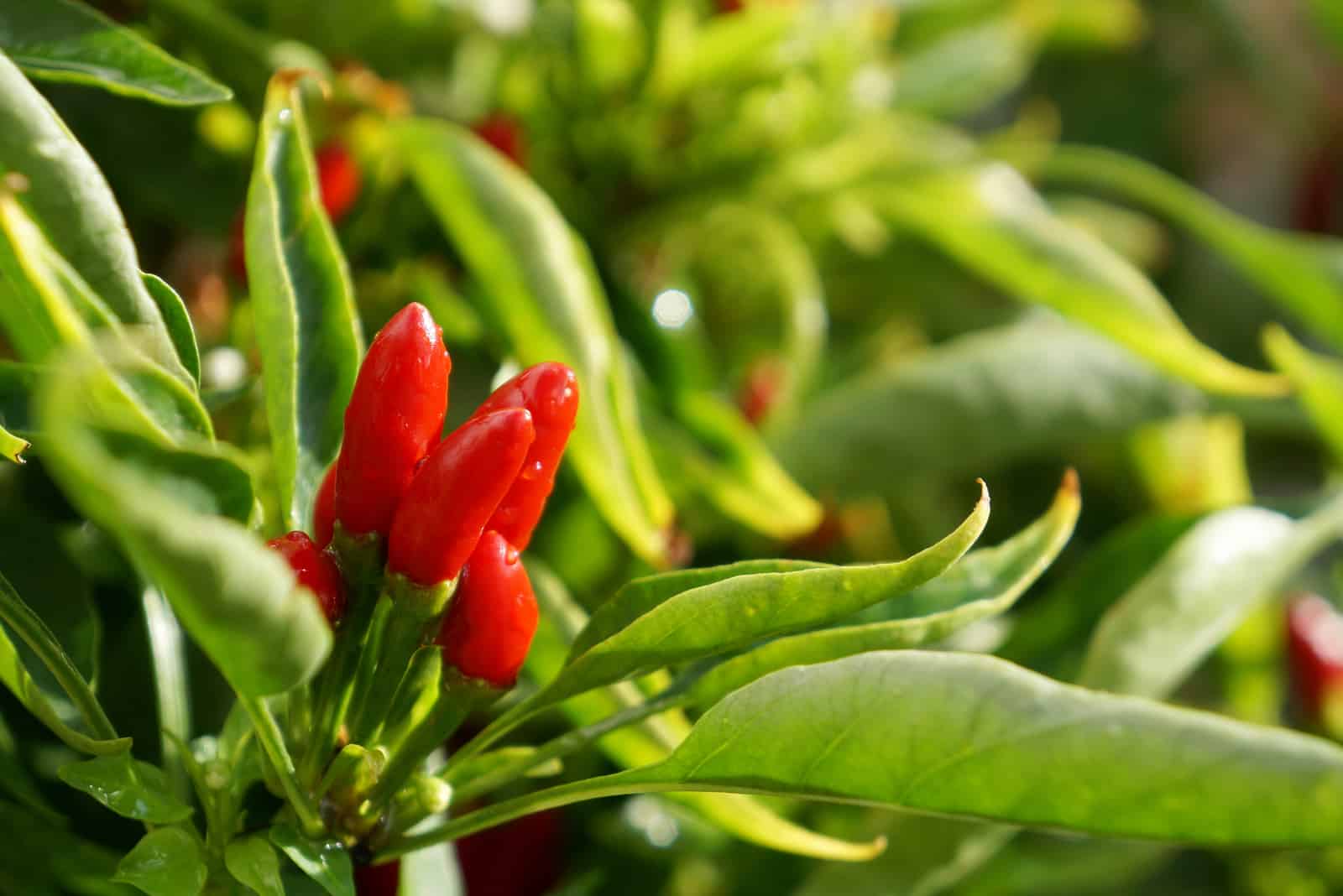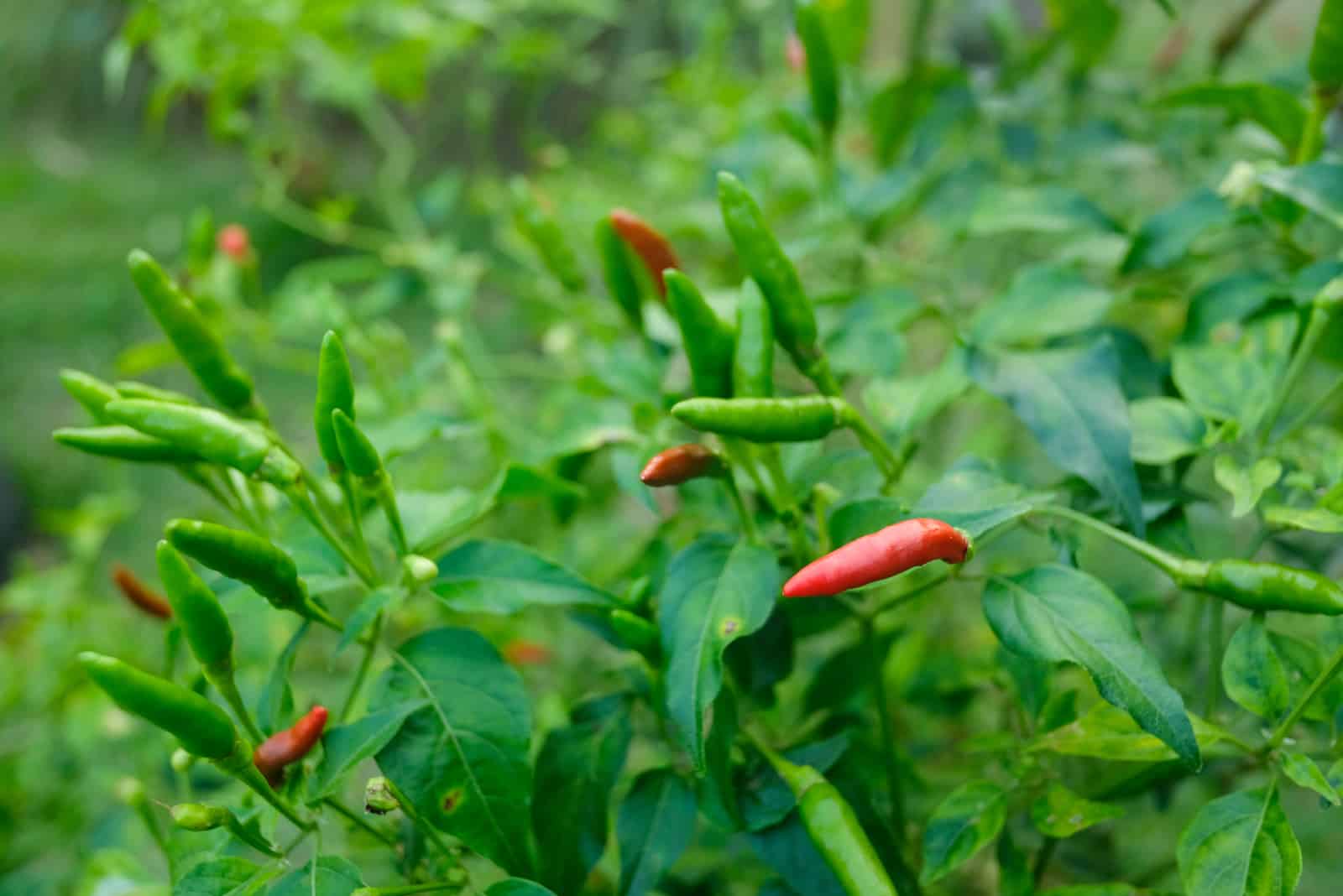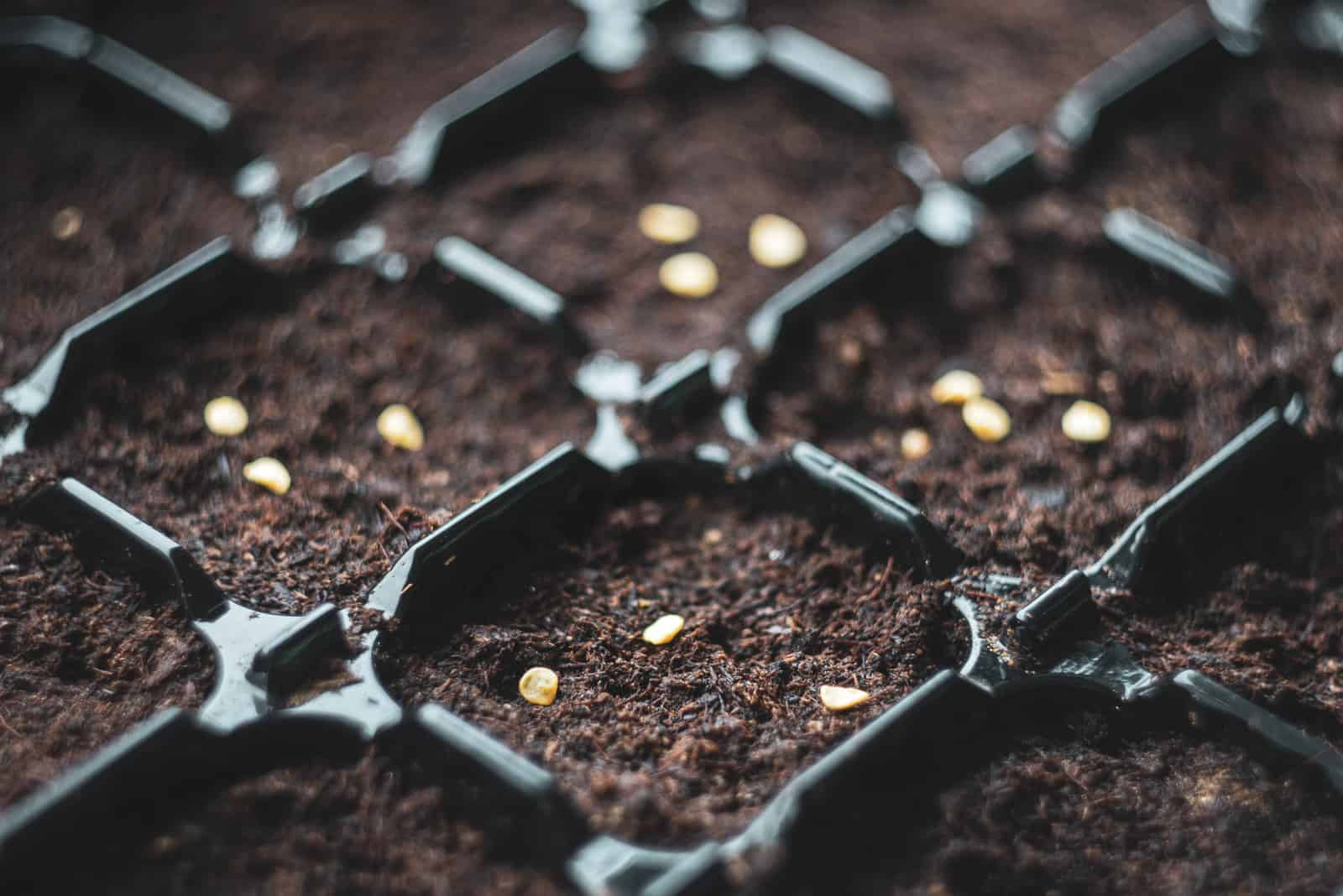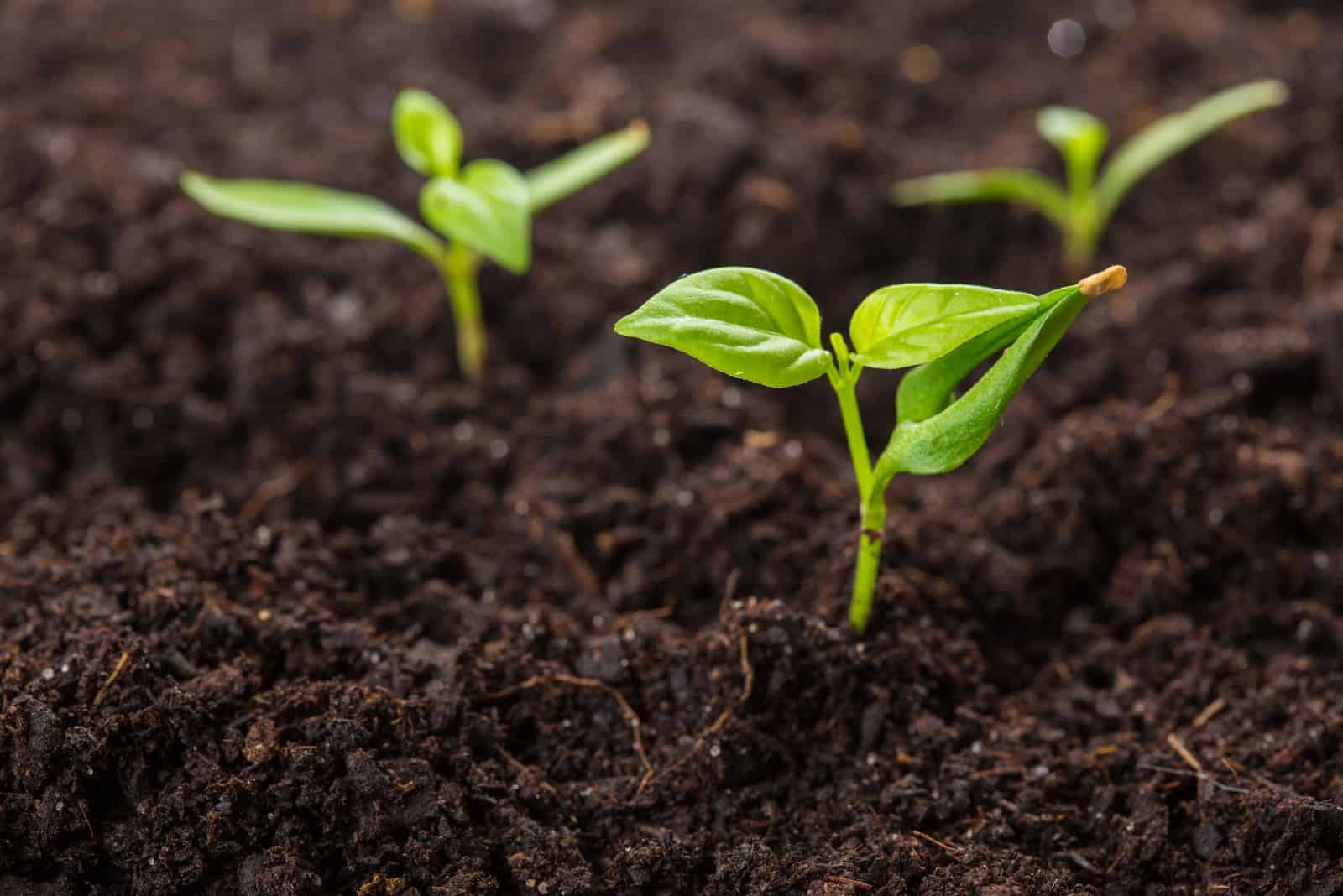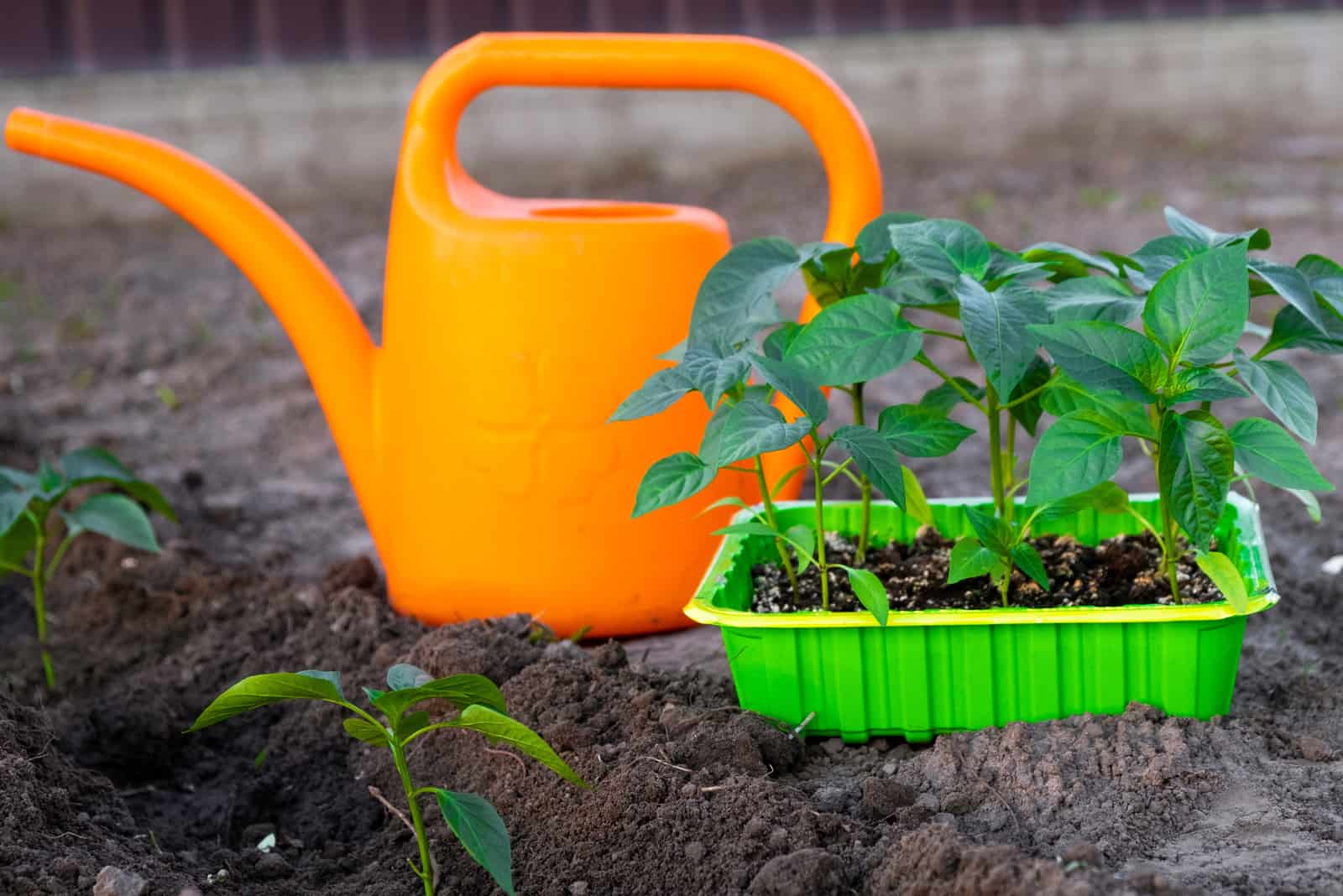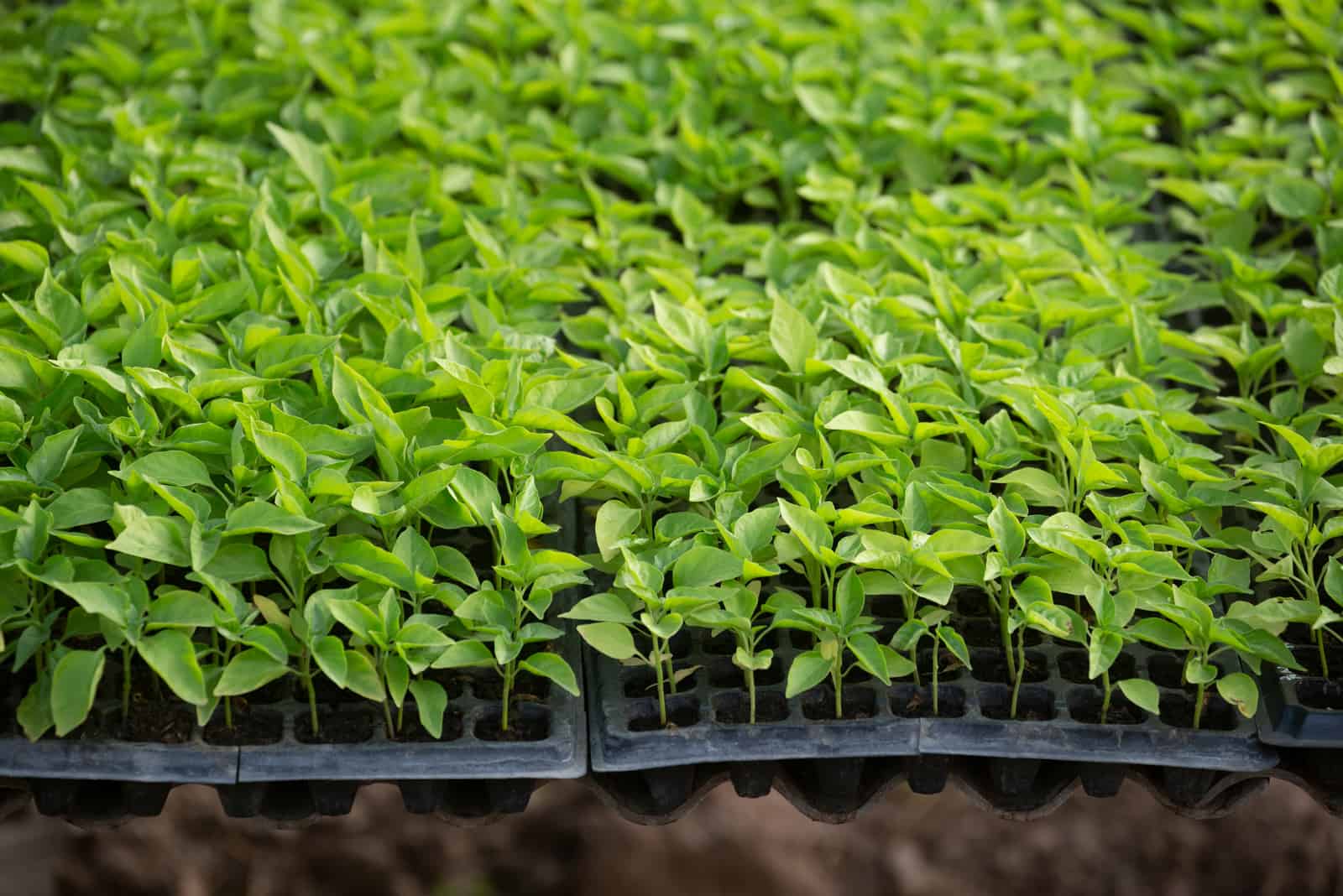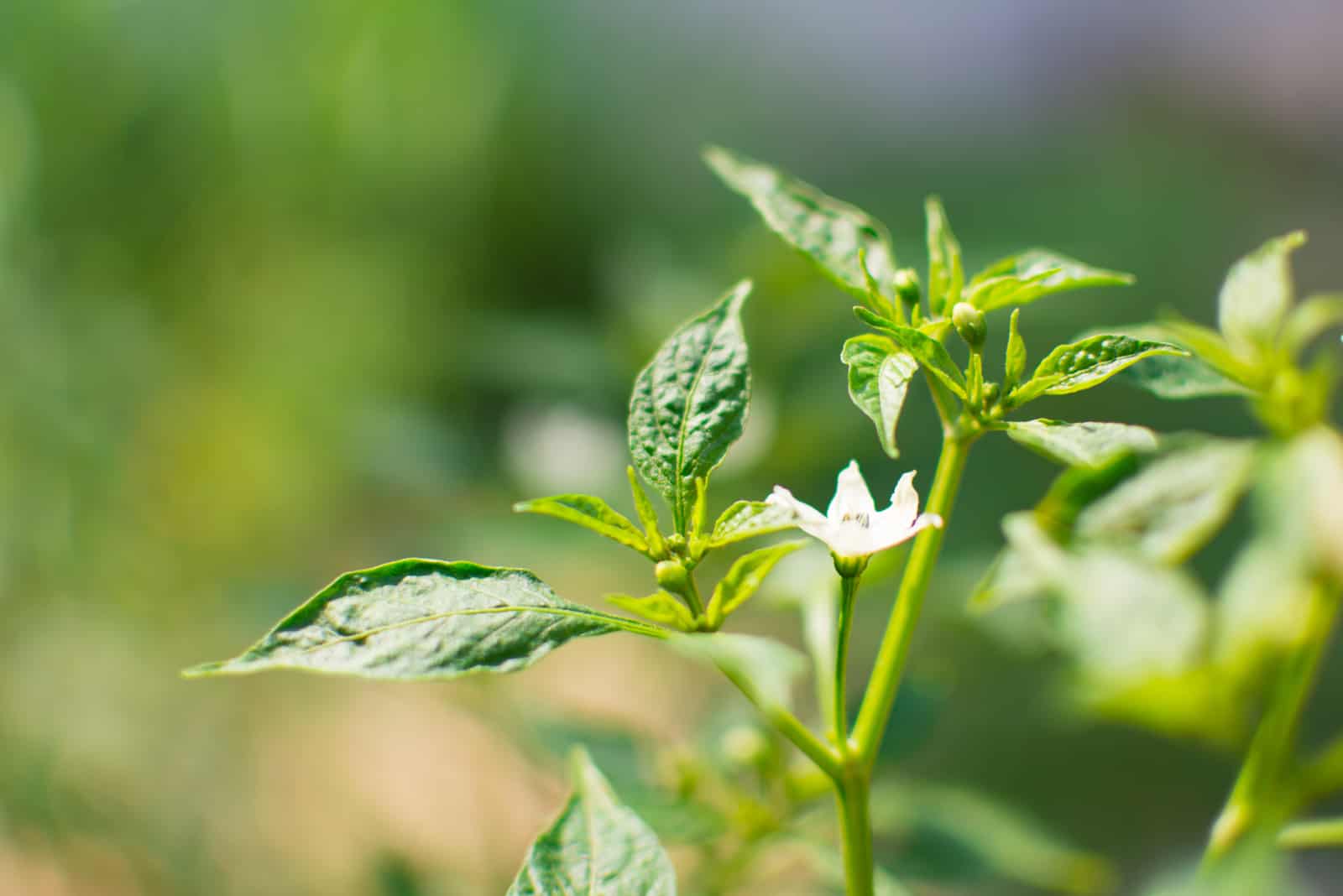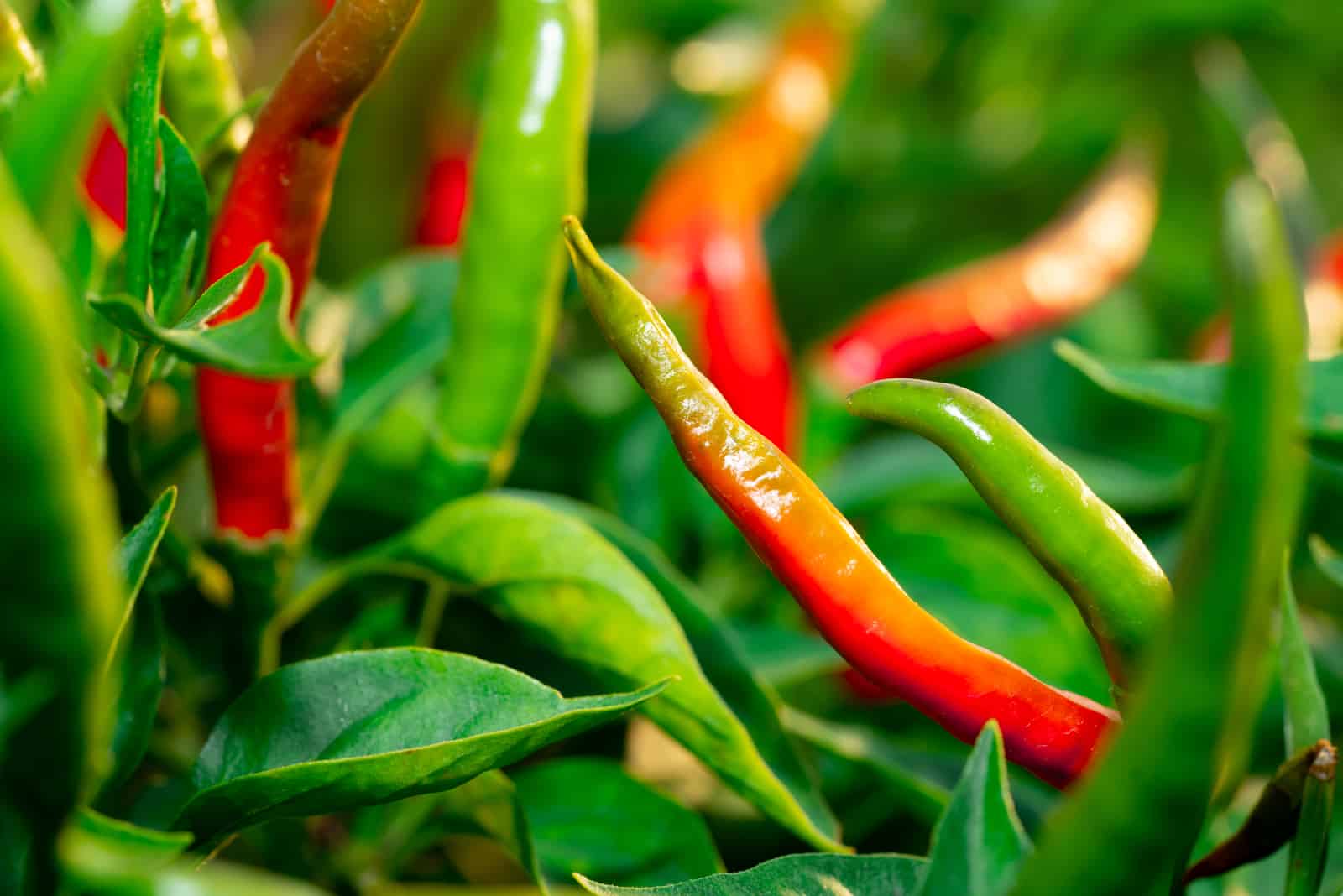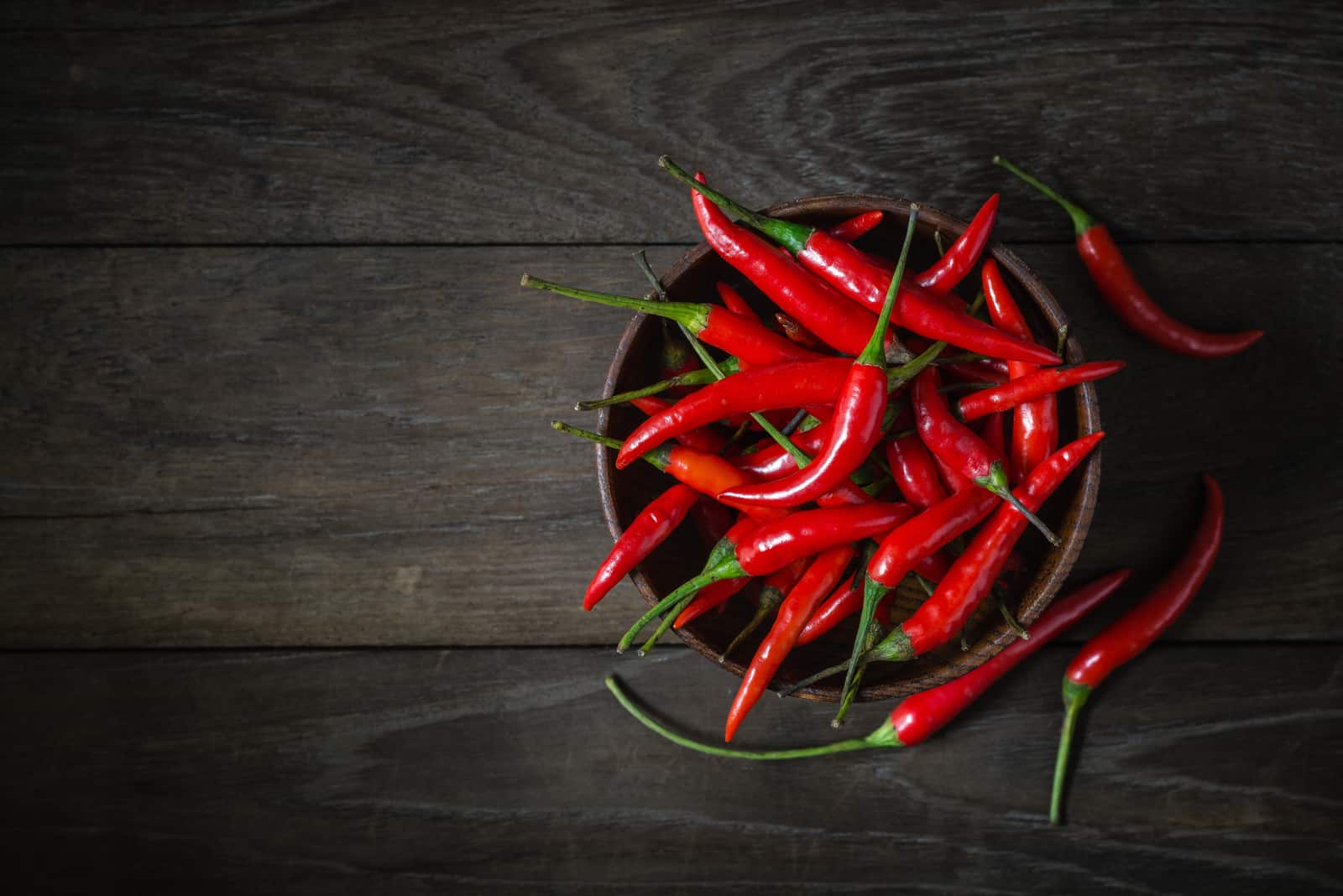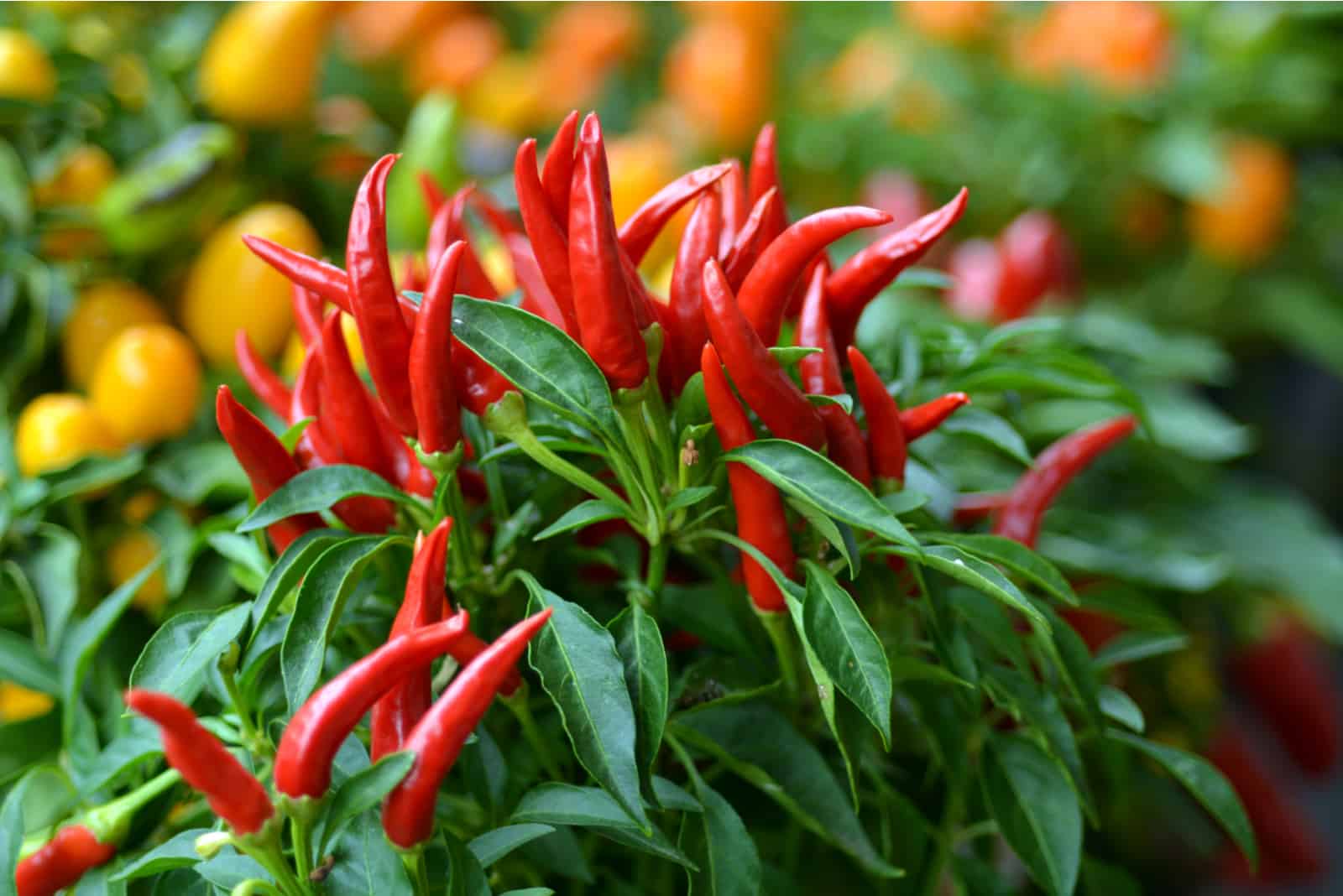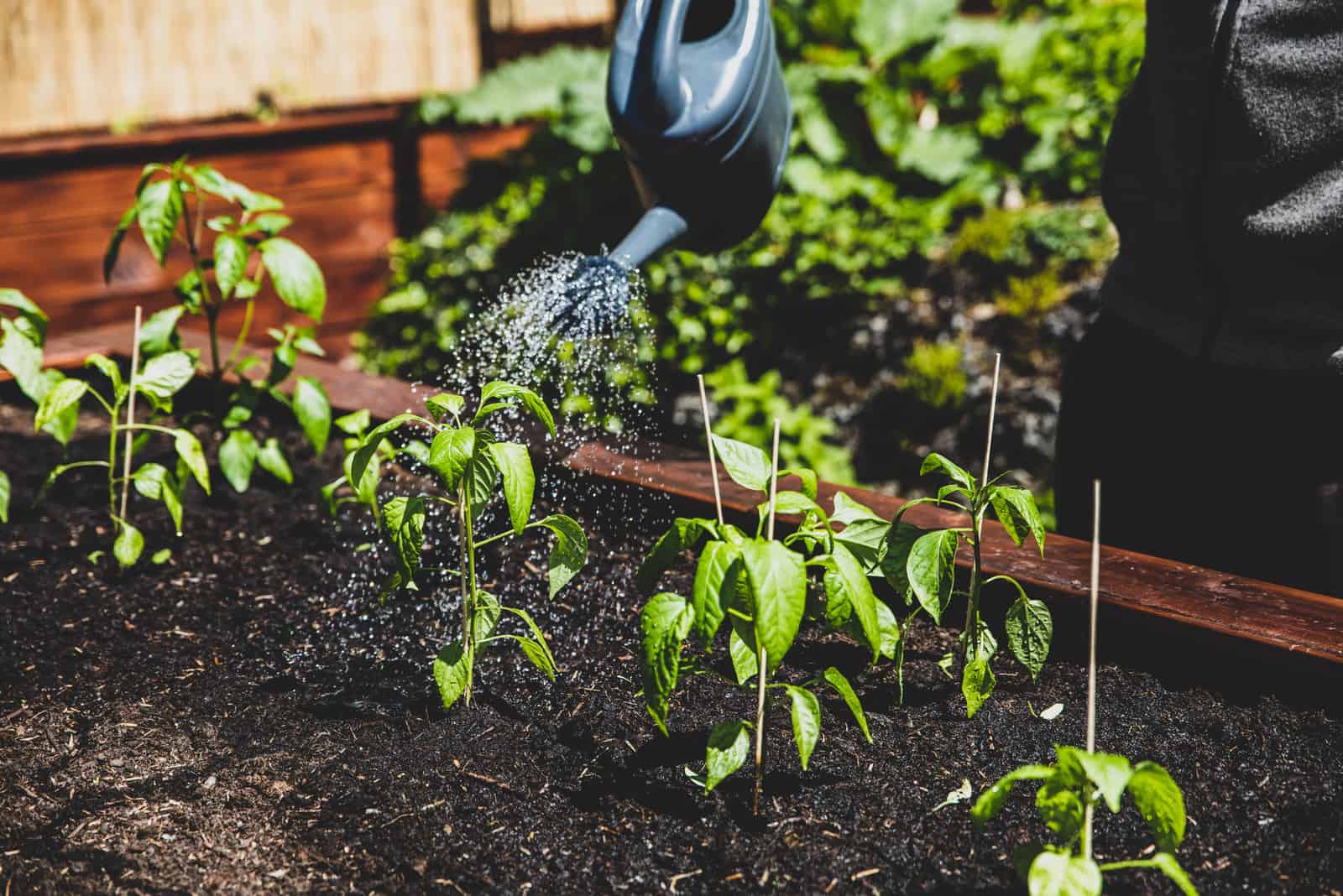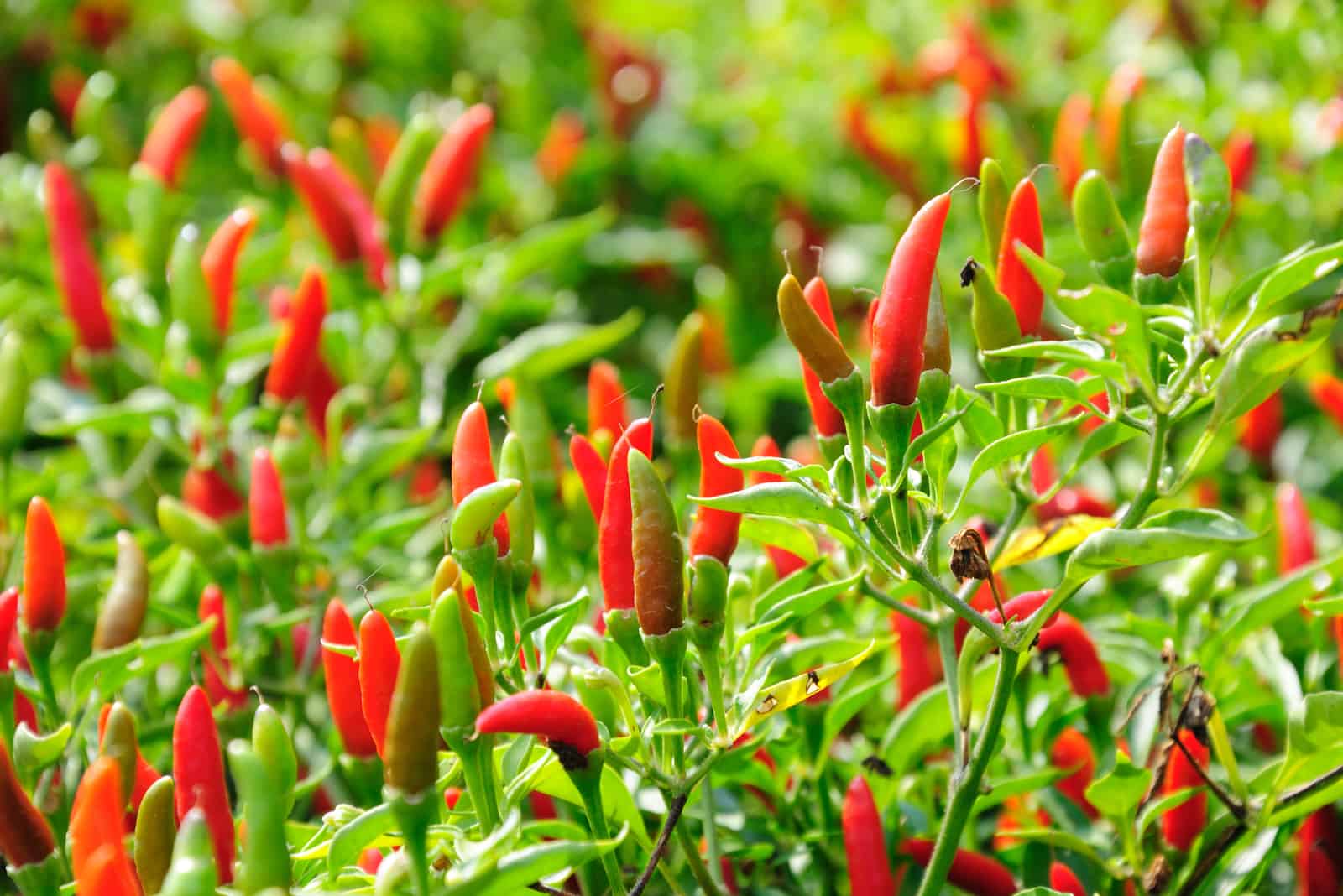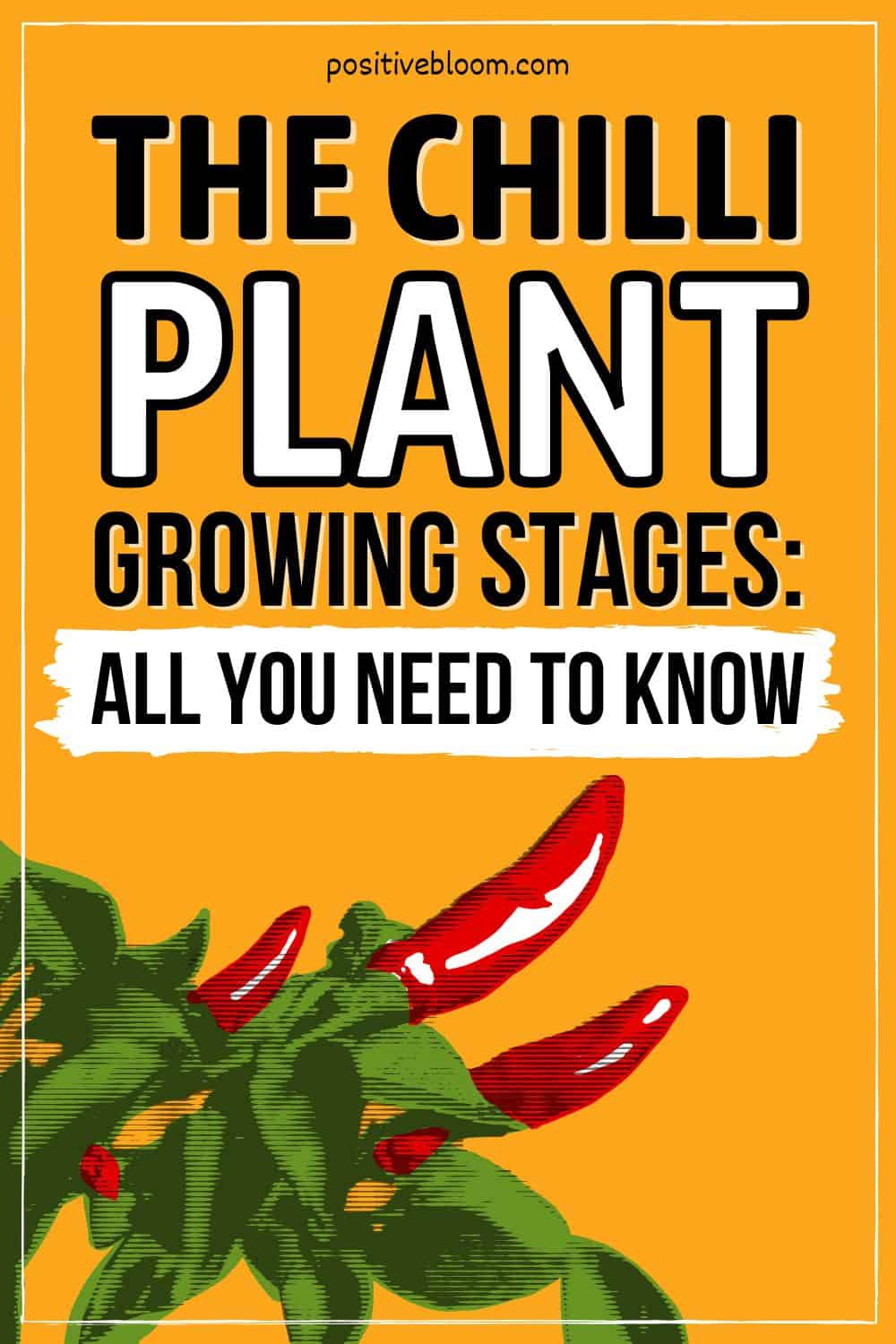The best way to spice up your garden is by growning some delicious chili peppers!
There is no better feeling than sowing chilli seeds before watching all the different chilli plant growing stages unfold. Trust me, you will cherish those plants like little babies, especially when you are harvesting your spicy peppers!
Growing chilli plants is not a hard task, but there are some things you need to know before planting, like when the right time to plant is or whether you are using the right soil type.
But don’t worry, we have everything you need to know and more right here!
We will go through all the various chilli plant growing stages and explain what the plant looks like at each of them, as well as what to do to encourage its growth and development.
If you run across any issues, we will provide all the solutions.
Let’s dive right in!
What Are The Chilli Plant Growing Stages?
Whether you are growing chili plants (also known as Capsicum Annuum) outside in the garden, in a greenhouse, or even in your own apartment, they all share the same growth stages:
• Sowing chili seeds
• Seed germination
• Chilli seedlings
• Flowering
• Maturation
• Harvesting
If you are living in a region with a warm climate, you can sow the seeds directly into the soil. Otherwise, you should start the plants inside and then transplant them when the soil has warmed up. This way, you will extend the growing season and end up with lots more peppers!
Regardless of your situation, the same rules apply to all chilli peppers: keep them in a sunny location with moist soil and provide them with fertilizer during the growing season.
1. Sowing Chili Seeds
You can either sow the pepper seeds directly into the ground or start your plants in containers before transplanting them outside. Otherwise, leave them to continue growing and developing in the pots.
Bear in mind that these seeds cannot tolerate frost, so you should only sow them directly in the soil if you live in an area with a warm climate. If you have a heated propagator then this shouldn’t be an issue.
If you are planning on growing the seedlings in a greenhouse, then the ideal time for sowing them would be late February and early March.
However, if you are planning to transplant the plant outside, then start sowing them in April or May to provide just enough time for your plant to become established and the soil to warm up.
How To Sow The Seeds
There are a few things that you will need for sowing the seeds: a seed tray, chili seeds, and loam-based seed compost mixed with vermiculite. If you don’t have any of these, go to your local garden shop and grab what you need!
Follow this step by step guide:
1. Use seed trays with drainage holes at the bottom, or small plastic cups instead.
2. Fill the trays 3/4 full of good quality compost suitable for your seeds.
3. Spread a few seeds evenly on top of the soil.
4. Cover the seeds with the rest of the soil. You can also use a coco-peat.
5. Moisten the soil and keep the trays in a warm and sunny spot. This is necessary in order for germination to occur.
Useful tip: You can also put the seeds in a paper towel and sprinkle it with water on a daily basis to keep the towel moist. Put it in a location where the temperature is above 68 degrees Fahrenheit. In about ten days, your seeds should germinate. Transplant the little sprouts into small pots and keep the soil moist.
2. Seed Germination
As we already mentioned, in order for germination to occur you will have to provide the seeds with a warm temperature of around 60 degrees Fahrenheit, but also keep the soil moist.
Germination should occur in 7 to 10 days after sowing the seeds, however, it might take a bit longer so just be patient. Once it took almost two weeks for my seeds to germinate, even though I did everything as I normally would.
Sometimes it depends on the type of chilli seeds. Habanero seeds can take up to 3 or 4 weeks to germinate, while Cayenne seed germination happens in a matter of days.
Be careful not to overwater your seeds as wet soil can basically drown them, and you will be disappointed if the germination doesn’t occur due to a silly mistake.
I would recommend you alternate the days you water.
Once you notice little sprouts coming out of the soil, you will know that the seeds have successfully germinated! Good job!
3. Sprouting
You will first notice green shoots coming out of the soil, which will then develop into green leaves. These are known as false leaves, and they are referred to as cotyledons.
In the week after, you will notice a formation of a new pair of leaves, which are known as true first leaves.
The little sprouts will continue growing and developing, and you will see plenty of leaves in no time!
Make sure that you provide these little sprouts with good lighting. Keep it on a windowsill that gets at least 6 hours of sunlight throughout the day.
You should still keep the soil moist, although you can reduce watering to every couple of days. It would be best to check the soil before watering. You can simply use your finger and water this baby plant if the soil has dried out, and if not, postpone watering to another day.
4. Chilli Seedlings
Once a small plant has been established and the seedling contains a few pairs of leaves, it is time for transplanting or repotting because your plant needs much more space to grow and develop.
If you want to transplant your seedling outside, make sure that you do it around May because the soil temperature is warm enough and it will make a perfect environment for your seedlings.
However, you can also repot your plant into a larger pot. This is more convenient because you can put your pot outside and then bring it back indoors if the weather is not suitable for chilli growing, or you can put it in a greenhouse.
If you notice roots coming out of the drainage holes, or if the plant is suddenly wilting or leggy even though you have provided it with enough water and sun, then the plant has most likely used up all the space and needs to be repotted into a larger pot.
Transplanting Seedlings Indoors
If the seedlings have outgrown their seedling tray, then you must transplant them into a new and larger pot. Bear in mind that you will probably have to repot your indoor seedling a few times before transplanting it outdoors.
You will need an adequate potting mix, some 3 to 4 inch pots, and plant labels (optional).
Follow this step-by-step repotting guide and be careful not to harm your delicate pepper plants.
1. To loosen up the soil and make the whole process a lot easier, you should water the soil before repotting.
2. Moisten the new potting soil so that it is ready and damp for the seedlings. If you notice any insect eggs, you can use boiling water or spray the soil with neem oil.
3. Fill the new pot 3/4 full with soil. Create a hole in the center of the pot to put the seedling. Make sure that the hole is large enough so that your seedling can fit perfectly without crushing its roots.
4. Take the seedling out of the old container. This can be done by turning the container upside-down and squeezing, or you can run the handle of a spoon around the edges of the soil and then push the seedling out.
5. Put the seedling into a new pot. Tap the soil around the plant to make it more compact. Add the rest of the mix to fill in the gaps.
6. Continue watering your plant to help it get used to its new container.
You can also follow this video that explains how to transplant the pepper plants:
Transplanting Seedlings Outdoors
As we previously mentioned, you should transplant the seedlings outside around May. That being said, you will probably have to repot your plant a few times indoors before transplanting it. The process is the same, you just have to use slightly larger pots each time you transplant it.
If you live in a different climate, the best way to determine the ideal transplanting time is by calculating at least three weeks after the last frost has occurred.
You will need potting mix with good drainage, a large container, fertilizer, and compost (optional).
If you are transplanting them into a garden, make sure that you put them in a sunny location because they need at least 8 hours of full sun during the day.
Here is how you do it:
1. Harden off your seedling before transplanting. This is done by putting the plant outside for a few hours so that it can get used to the temperature during the day and night. You should start this about two weeks before transplanting.
2. Prepare the container by filling it up with potting mix and leaving about 2 inches empty at the top. You should add water so that the soil is damp.
3. Fertilizer should be added so that your plant has enough nutrients in the soil for growth and development. You can use a fertilizer that contains potassium and nitrogen to help with fruit and foliage production.
4. Create a hole in the middle to put your plant. You can also add compost to it, though this is optional.
5. Put the plant into a new container and add the rest of the mix to fill the whole container.
6. You can add compost or mulch at the top. This will help to retain moisture and keep normal soil temperature to protect the roots.
7. Water your transplanted plant lightly — just enough so that it can adjust to its new environment. Proceed with light watering for a few days so that roots can get easy access to water.
8. Keep the container in a sunny location. Pepper plants need at least 8 hours of direct sunlight a day.
9. Continue watering your plant frequently. If the plant starts wilting, it usually means that it needs water. Grab a hose and water your pepper plant until water starts coming out the bottom of the container.
10. You should also continue fertilizing your plant during the whole growing season. This depends on the type of fertilizer: if you use a liquid one then you will probably have to apply it more frequently than a granular one.
5. Flowering Stage
If you have provided the best growing conditions, soon enough you will begin to see little white chilli flowers all over your plant!
These little flowers will eventually turn into pepper plants!
However, before that happens, pollination has to occur. Pollination is done by pollinating insects, but if you live in an area with a low bee population, then you will have to take the matter into your own hands and pollinate the flowers yourself.
This is done with a pollinating brush, though some growers tend to rub male and female flowers. If this is your first time dealing with this, I recommend using a brush because it can be pretty hard to determine what is a male and what is a female flower.
Bear in mind that cross-pollination can occur between different varieties of pepper plants. So, if you want to grow only jalapenos, for instance, then you should separate them from the rest of your chilli plants.
Continue watering and fertilizing your plant. You can use rainwater instead because tap water contains lots of chlorine, which can be harmful to your plant. You can also use distilled or filtered water.
In some cases, pepper flowers can fall off. The main issues that cause this are temperature fluctuations, overwatering, overfertilizing, and a container that’s too small.
Pay close attention to these factors as they greatly contribute to flower and fruit production.
6. Maturation
If pollination is successful, then your plant will bear fruits in no time!
At this stage of plant growth, you will be able to see that some of the flowers have turned into small chillies while others are still blooming and growing!
You should also continue with regular plant care and start harvesting your plant. If you like your chillies and peppers on the spicy side, don’t harvest them until the end of the growing season as the longer they are attached to the plant, the spicier they get!
7. Harvesting
After all the flowers have become fruit, your plant is near the end of its life cycle. All that’s left to do now is harvesting!
Harvesting is the last step in the gardening process. There’s nothing like collecting fruit from plants you have planted and taken care of yourself, so you should definitely be proud!
If you are excited to try your peppers as soon as possible, you can either harvest them when they are large enough to eat or wait for them to fully mature and get spicier.
You can cut the peppers using pruning equipment or a knife during the harvesting process.
The more peppers you cut, the faster new blooms and fruits will grow! This is why hand plucking them is a bad idea because it may lead to broken branches.
When working with spicy peppers, you should always wear gloves! If you rip them, you risk burning your skin or eyes. It’s no surprise that pepper spray is a common self-defense weapon.
Bear in mind that the harvesting time depends on the variety you have planted — for instance, green chilli takes about 75 days to fully mature after transplanting, while bell peppers can take about 60 days.
Common Issues When Growing A Chilli Plant
• Seeds not germinating — they need moist soil and warm temperatures to germinate, so these two factors are essential.
• Leggy seedlings — they need more space and water.
• Flowers falling off — flowers tend to fall off due to temperature fluctuations, overfertilizing, and overwatering. No flowers = no chilies.
• Powdery mildew — a fungal infection that can be detected by white patches on the plant’s leaves. High temperatures and humidity are the main causes. Can be treated with fungicide.
• Aphids — small pests that tend to invade chilli plants. You can remove them by hand or use pesticides to control them.
• Yellow leaves — these are usually an indicator that there is something off with your plant. The main reasons are poor drainage, no nutrients in the soil, or pest infestation.
• Bacterial leaf spot — caused by Pseudomonas bacteria. They leave small spots and holes in the leaves. Water carefully to avoid splashing and getting the leaves wet. Provide space between your plants and improve air circulation. Make sure that the soil is moist, but not wet.
• Spider mites — pests that tend to invade chilli plants and leave small webs. Can be treated with neem oil.
Frequently Asked Questions
1. How long does it take for a chilli plant to grow?
This depends on the variety of chilli plant, however, they usually take about 80 to 120 days after sowing the chilli seeds to grow.
2. How do I know when a chilli is ripe?
They usually have an intense red color, though this can also depend on the variety because they come in many different colors. For instance, it can be confusing to know when to pick ghost peppers because they come in red, yellow, white, and orange.
Nonetheless, ripe chilies have a firm structure and intense color (I am sure that you will be aware of what chili plant you are growing).
If the ripe peppers are soft and wrinkly, they are probably overripe, although they can still be eaten. (But be careful, because they are extremely hot at this stage!)
3. What should I do if my chilli plant is wilting?
There are a few reasons your chilli plant may be wilting. First, you are probably not watering it enough or the soil has poor drainage. Water your plant frequently and use well-draining soil.
Another issue might be that the soil is not rich in the nutrients your plant needs for growing and producing fruit. In this case, use a fertilizer high in potassium and low in nitrogen. If you are using liquid fertilizer, then it should be applied weekly. Other fertilizers are not applied that often, so always follow the instructions.
Chilli plants also like warm temperatures, so low temperatures are another reason your chilli plant may be wilting.
Finally, container size might be an issue because too small a pot will result in your plant becoming root-bound, which prevents normal water and nutrient uptake. Simply repot your chilli plant in a larger pot.
Final Thoughts
Chilli plants are a great way to spice up your garden and they have numerous health benefits because of the high amount of capsaicin they have.
Growing chilli plants doesn’t take too much time and energy, you just have to make sure that the temperature is warm and keep the soil moist. Don’t forget to fertilize your plants as well!
You will be able to observe different chilli plant growing stages, which builds anticipation for harvesting the delicious hot peppers at the end!
I am sure you will find some great ways to use this plant either in salads, salsas, or even in sweet and spicy jams.
Until next time!
Like this post? Share or pin it for later!

